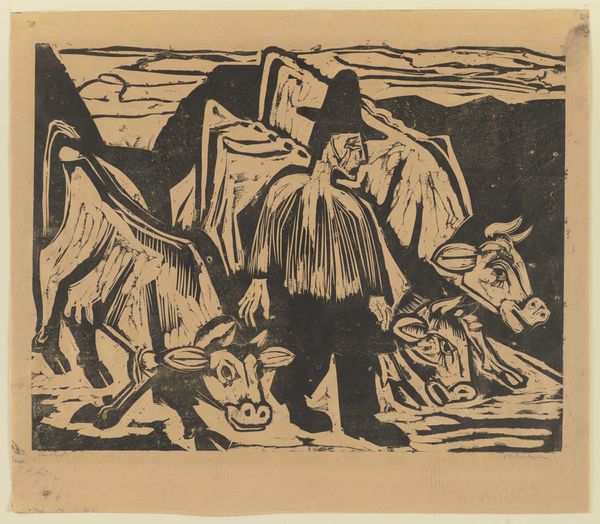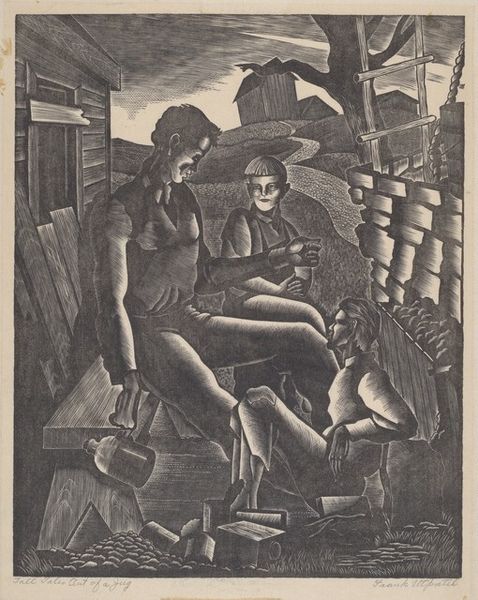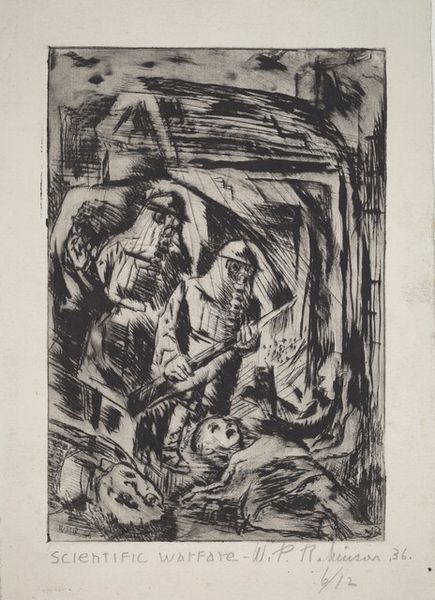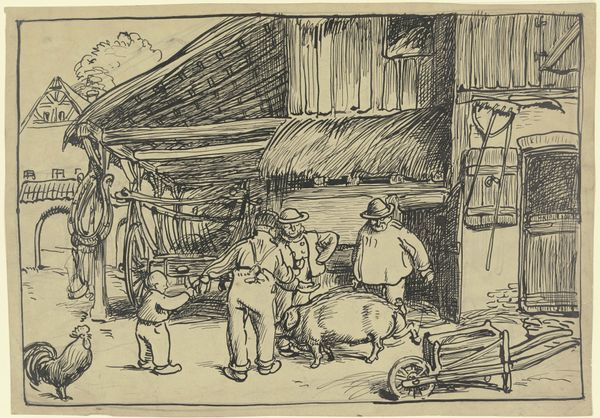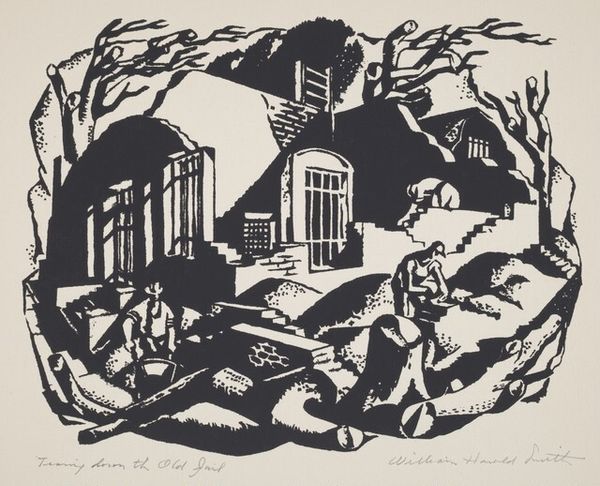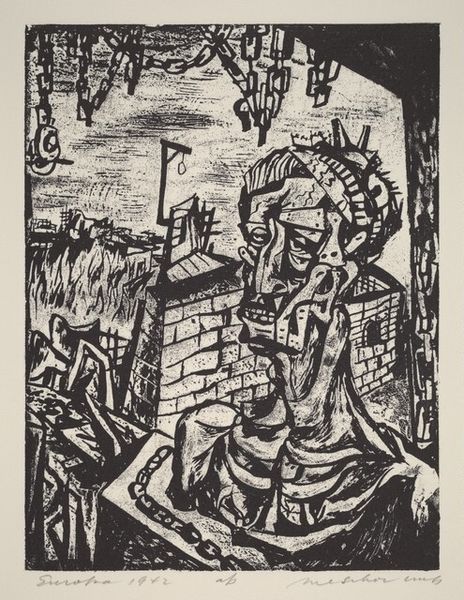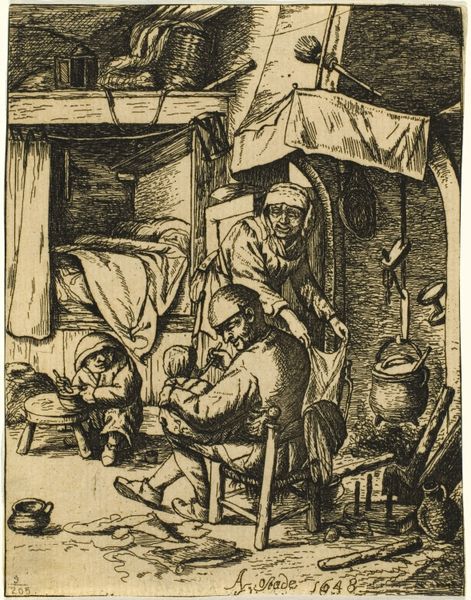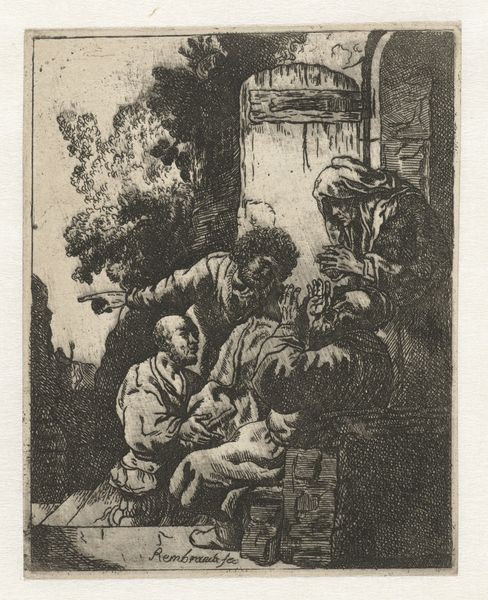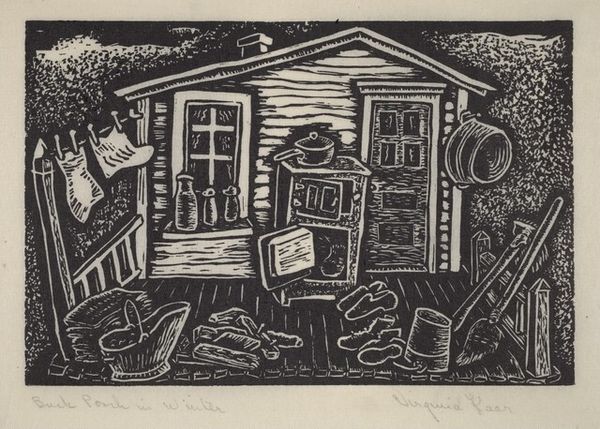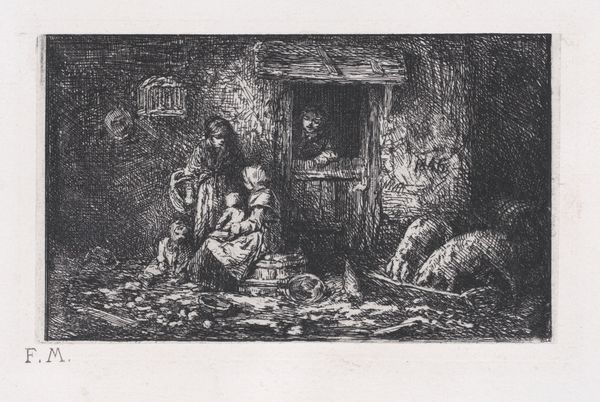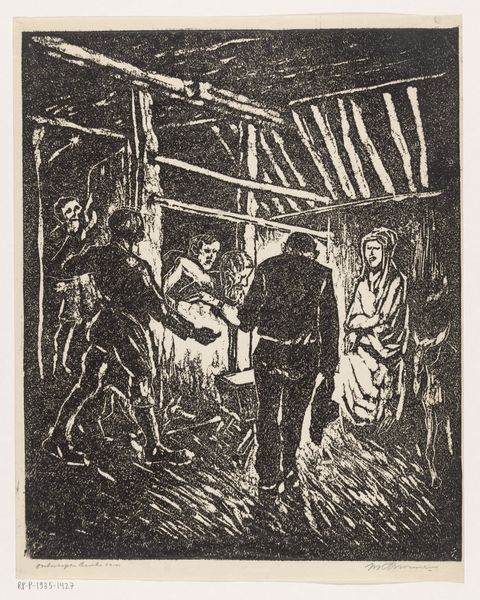
drawing, print, woodcut
#
drawing
#
narrative-art
# print
#
landscape
#
german-expressionism
#
figuration
#
linocut print
#
expressionism
#
woodcut
Copyright: Public Domain
Curator: Ernst Ludwig Kirchner’s woodcut, "Mondnacht," created in 1922, presents a fascinating study in light, shadow, and human interaction, doesn’t it? Editor: Yes, a strange kind of heavy quiet. Like the moment in a dream when you know something is very wrong, even if you can't name it yet. It pulls me right in. Curator: It’s worth considering the labor inherent in this technique. The cutting away of the wood, the planning, the physical act of printing... a kind of brutal subtraction reveals the image. Kirchner's materials are very present. Editor: The bold strokes! Each figure is simplified, carved down to near-essentials. They appear more like impressions than fully formed beings. The setting almost swallows them. I think there’s vulnerability there. Curator: And if we consider the historical context of its production, Germany in the 1920s—the Weimar Republic teetering between chaos and reinvention—the artwork suggests a social commentary on marginality and alienation. Editor: The composition…it's almost like a stage set. Each person occupying their little square of drama. All the lonely people, where do they all come from? It even feels slightly theatrical, staged under this stark moon. Curator: Yes, and the cat adds an element of everyday life, but is that to be seen as part of some lower-class stereotype? Some other aspect of printmaking would give him opportunities for commerce. And we see these rural subjects again and again... Editor: Don’t forget that cats often signify something witchy, feminine, and certainly not under control! I appreciate how Kirchner isn’t telling us how to feel. Each shape hints at multiple possibilities, or stories. It makes my brain hum. Curator: Thinking about these forms...they represent, to me, the simplification necessary for mass production and distribution; each component relates directly to labor, consumption, the art market of the period. It is about making something and sharing something. Editor: The night! Such a dark night of the soul. It lingers, and you just want to jump in, stir things around. And look at the composition, that sharp black cat, as dark as everything else, making you ask more questions. What’s up, kitty? Curator: Overall, considering materiality alongside form and content enhances our reading. The physical nature of the woodcut reflects themes present in Weimar Germany. Editor: It remains potent. Like those little slices of intense night caught, and released by Kirchner forever, for all of us.
Comments
No comments
Be the first to comment and join the conversation on the ultimate creative platform.

